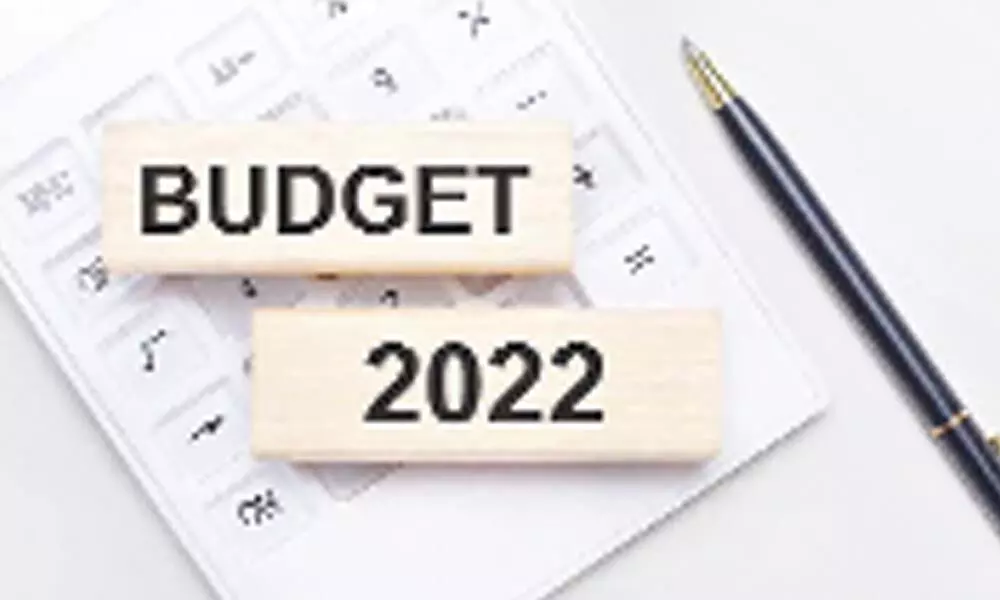Key challenges for Finance Minister ahead of Budget 2022
Higher capital expenditure urgently needed to bring the economy back to a higher growth path
image for illustrative purpose

The big question is whether the budget can provide enough support for an economy that is growing at an uneven pace. The pace of growth not only has to be stepped up in the next fiscal but there must be far greater inclusivity. It is a tall order but is achievable in spite of many challenges in the pandemic era
The Covid pandemic has posed a special set of challenges for Finance Minister Nirmala Sitharaman over the past two years while finalising the budget. The scenario is somewhat better in the current fiscal as the economy is no longer contracting but actually moving towards positive growth. Even the International Monetary Fund (IMF) has downgraded the outlook for 2022-23 only marginally from 9.5 to 9 per cent, after taking the impact of the third wave into account. At the same time, it is widely accepted that the economic recovery has been K shaped. In other words, it is an uneven process with some segments of the economy doing very well while others have fallen behind.
The formal sector has done better than expected despite supply disruptions due to the second and third Covid waves. The manufacturing sector has been recording positive growth based on the purchasing managers' index (PMI) for second and third quarter of the current fiscal - July to December 2021. There has also been a 13.7 per cent rise in output of the eight core sector industries in the first eight months of 2021-22, though this is on the low base of the previous pandemic-hit year. The revival in these sectors has been reflected in higher GST collections which have touched over Rs one lakh crore every month consistently for the July-September period. Direct tax collections have also been buoyant giving some comfort as the Finance Ministry seeks to contain the fiscal deficit.
Other economic indicators have also pointed towards recovery like rising petroleum products consumption and rail freight earnings. Several key manufacturing sectors like passenger cars have been showing an upswing in demand. In fact output has been constrained mainly by external factors like the global shortage of semiconductors that has considerably slowed the pace of output.
On the other hand, there continue to be many weak spots in the economy. The first is inflation which reached 5.6 per cent in December. The major culprit has been fuel prices which have rising relentlessly during the course of the year. This has been partly due to the spurt in global prices which are now touching 90 dollars per barrel for the benchmark Brent crude. But it is also partly due to the successive hikes in excise duties effected over the past few years by the Modi government to take advantage of softening in world markets. A small cut in excise duty was carried out recently in a bid to contain the soaring retail prices of petroleum products but it has not had a significant impact.
The worry for policymakers obviously is that any cuts in excise duty will come in the way of trying to contain the fiscal deficit which had been pegged at 6.8 per cent for 2021-22, after the spike to 9.5 per cent in 2020-21.
The second major lacuna in the recovery process has been unemployment. The situation has improved since 2020 when the severe two month lockdown caused millions to lose their jobs especially migrant workers. But successive Covid waves have proved a setback as many contact-intensive sectors have had to close down following movement curbs and other restrictions placed on their operations. The latest data from the Centre for Monitoring Indian Economy (CMIE) shows that unemployment reached a four month high of 7.9 per cent in December 2021. This is an area that needs immediate attention though obviously most solutions would achieve results in the medium and long run. What the Finance Minister can do in the short term, however, is to provide a series of concessions and incentives to medium and small enterprises that are large employers. Many of these are in the hospitality sector which has been in dire straits due to Covid restrictions. A special relief package for this sector would go a long way towards enabling these establishments to bring back personnel to pre-pandemic levels.
For the longer term, it is imperative that the focus be put on speedy implementation of projects already identified in the National Infrastructure Pipeline. This is bound to enhance the job market in the days to come but the pace needs to pick up rapidly. The infrastructure push may require higher capital expenditure but this is urgently needed to bring the economy back to a higher growth path. In this context, it needs to worry less about a widening fiscal deficit at a time when higher outlays for key sectors are unavoidable.
The Finance Minister also needs to have a relook at the concept of providing direct assistance to those at the bottom of the pyramid who have been facing the brunt of the repeated curbs on normal commercial activities. Direct benefits transfers to the poorest of the poor would not only provide some immediate succour but also inject demand especially into the rural economy. This is an issue that has been kept on the back burner for the last two years but deserves serious consideration yet again.
The big question is whether the budget can provide enough support for an economy that is growing at an uneven pace. The pace of growth not only has to be stepped up in the next fiscal but there must be far greater inclusivity. It is a tall order but is achievable in spite of many challenges in the pandemic era.

